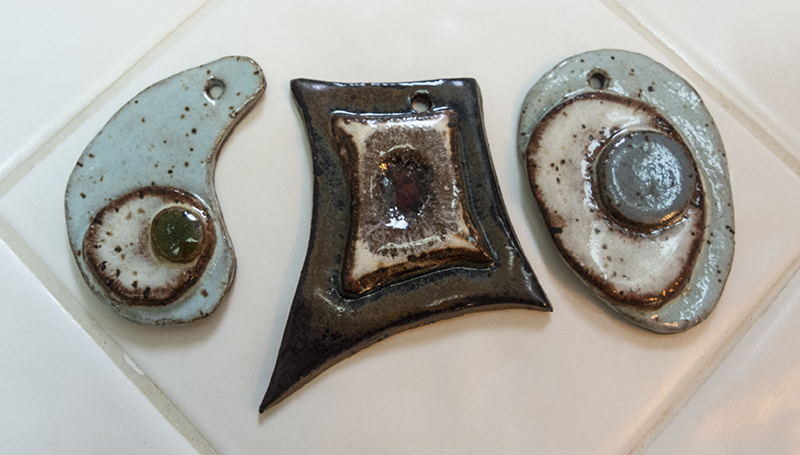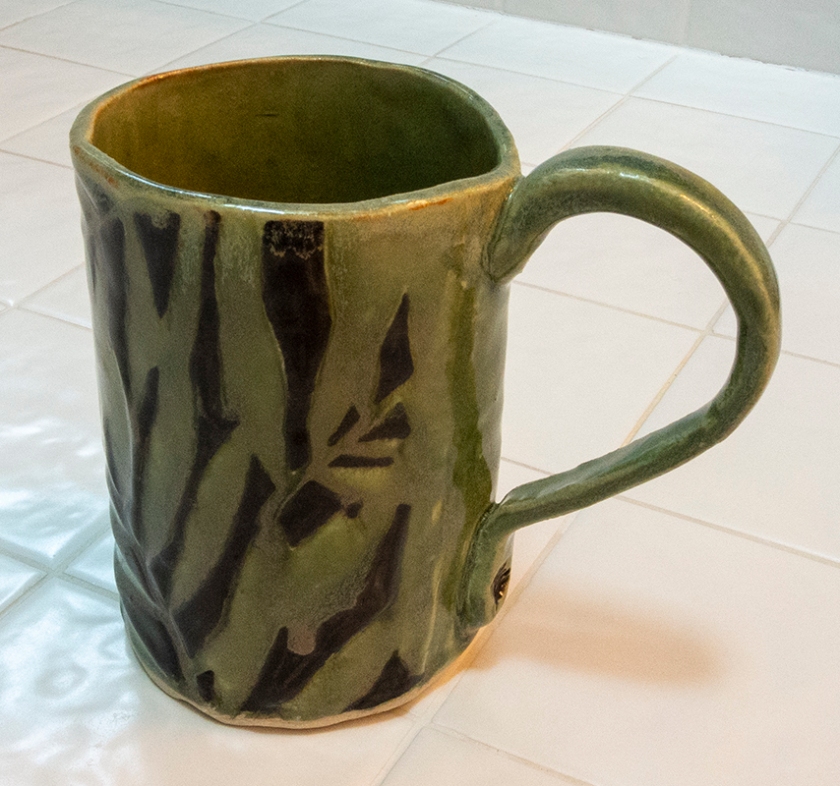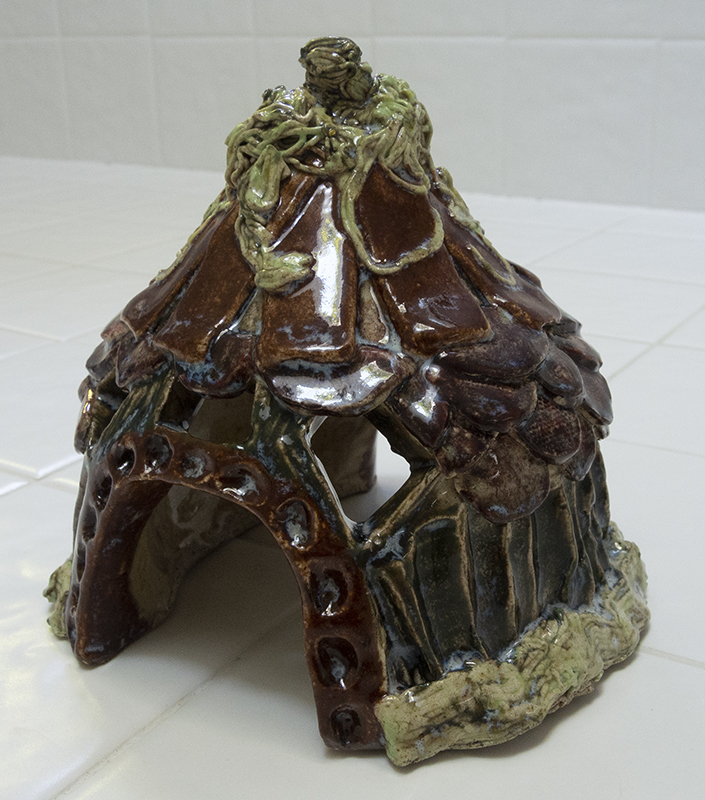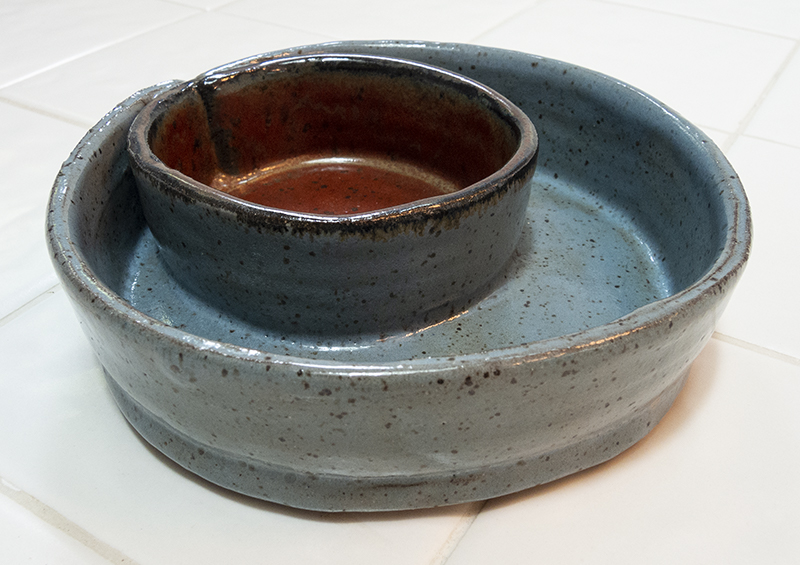
I’d been wanting to try some red clay mainly because people kept telling me that the Randy’s Red glaze, while looking murky on other clay types, looks great on red clay. Red is my favorite color. I wanted to make some truly red glazed pots without using the underglaze crutch. And then a friend offered me the use of some of her surplus red clay, plus I got a windfall of free red clay that had been abandoned after a class had ended. It was time to try red.
Lesson learned #1: When clay has dried out some, don’t try to work with it like that unless you’ve been bench pressing for a while. Tried. Failed. I had to wet the clay AND throw some wet paper towels in the bag for a couple of days to moisten the clay enough so that I could work with it.
Lesson learned #2: Wear old clothes to the studio on the day you plan on working with red clay. It’s a mess to work with and it stains clothing.
Lesson #3: Learn to shout “red clay incoming!” when you are throwing on a wheel next to others who are working with paler clay types. I had experienced being at the wheel next to a red clay thrower when I was working with porcelain and already knew how that could turn out. I throw wet. I’m sure everyone within range of my soggy flying red clay received some on their white and porcelain pots, too.
Lesson #4: Randy’s Red is apparently a cone 7 glaze. Our studio fires only to cone 6. Randy’s Red looks murky unless the piece it’s on is boxed in or the glaze is used on the inside of something so that the cooling down is slower and hotter.
My first project with red clay was jewelry pendants. Of course, I used Randy’s Red on the pointy piece in the middle and was surprised to get murk. That’s when I learned Lesson #4 from one of the studio monitors. In fact, she told me all of the things I had done wrong, which was just about everything.
I had never used the slab roller until this project. As my pieces were starting to curl up on the edges when drying, the monitor explained to me that I needed to roll out the slab in all directions to settle down the clay particles. Oh well. Too late. I covered my pieces with a board and piled on some heavy pots I was working on. It helped. The pieces flattened out.
I wanted to use some glass on one of the pieces, so I dug a hole and placed a tiny piece of red glass in it. At the pre-bisque stage. No one I talked to had ever done this at the pre-bisque stage, so of course I wanted to see how it would turn out. The bisque firing was fine. It was during the glaze firing that I got the brown starburst on the white glaze. In my opinion it ruins the effect, but someone else may like it. I think I’ll stick to glass after bisquing next time.
Next came Lesson #5, which was that red clay may not necessarily be the best clay to use when making jewelry. The white glaze pulled away from the edges and prominently showed the red clay. It came out a bit organic for my taste. But maybe someone else will like it. Maybe Lesson #6 is be wary of white glaze on red clay unless you don’t mind that particular organic look.






 This was a combination wheel/handbuilding project. I threw a closed form (my first one), then proceeded to make this toad house. It was sort of a class project. When I cut into my closed form, I found it to be a half inch thick! Oops. I think my closed forms need some work.
This was a combination wheel/handbuilding project. I threw a closed form (my first one), then proceeded to make this toad house. It was sort of a class project. When I cut into my closed form, I found it to be a half inch thick! Oops. I think my closed forms need some work.



